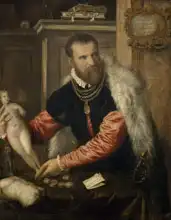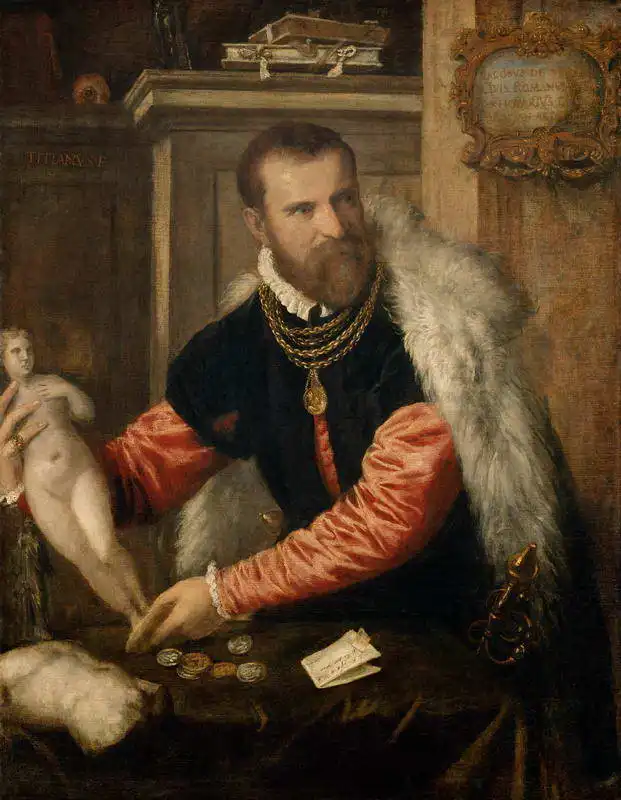About this finishing
Print. The image is printed on the top quality 10-ink HP Z9PS printer on HP matte 270 g / m2 paper. You can choose any size to an accuracy of 1 cm. A margin of 5 cm around the image is added to the size of the motif.


You can find a detailed description about our finishings
here.
Jacopo Strada
Date:
1568Medium:
oil on canvasLocation:
Kunsthistorisches Museum, Vienna, AustriaDimensions:
95 x 125In the final stage of life, during which
Titian primarily focused on religious themes, still found the energy on painting portraits. During the years of 1567 and 1568 created two beautiful masterpieces in this field: his self-portrait and a portrait of Jacopo Strada in Vienna. Jacopo Strada, the Italian antiques collector, scholar and historian, who also managed the art collection of Maximilian II. and Rudolf II. Jacop in the picture is in a slightly diagonal direction as to
Tiziana usual. Still image shows also signs of experimentation, which is
Titian tried until his death in 1576 in Venice, where his life ended the plague.
Tizian painted picture Jacopo Strada in 1568. Prevailing color of this fine art print is dark and its shape is portrait. Original size is 95 x 125. This art piece is located in Kunsthistorisches Museum, Vienna, Austria. This image is printed on demand - you can choose material, size and finishing.
Full name
Tiziano Vecelli Da Cadore (1485-1576)He came from a family of lawyers and notaries. At nine years of age, he left to study in the contemporary centre of art: Venice. There, he met with not only
Leonardo da Vinci and
Albrecht Dürer. Tizian’s uncle promoted and developed his talent, until one day the young artist was admitted to the workshop of
Giovanni Bellini. His name worked its way into the minds of potential customers. When his master died, he became the main Venetian painter. His customers were Venetian Doges, for whom he not only painted portraits (
Jacopo Strada). Tizian’s paintings have become a symbol of luxury and wealth. After the coronation of Emperor Charles V, he was awarded a knighthood. In 1542, at the request of Pope Paul III, he moved to Rome, where he replaced
Michelangelo. Tizian laid the foundations for the
Renaissance and inspired artists, such as
Rembrandt and
Rubens.

